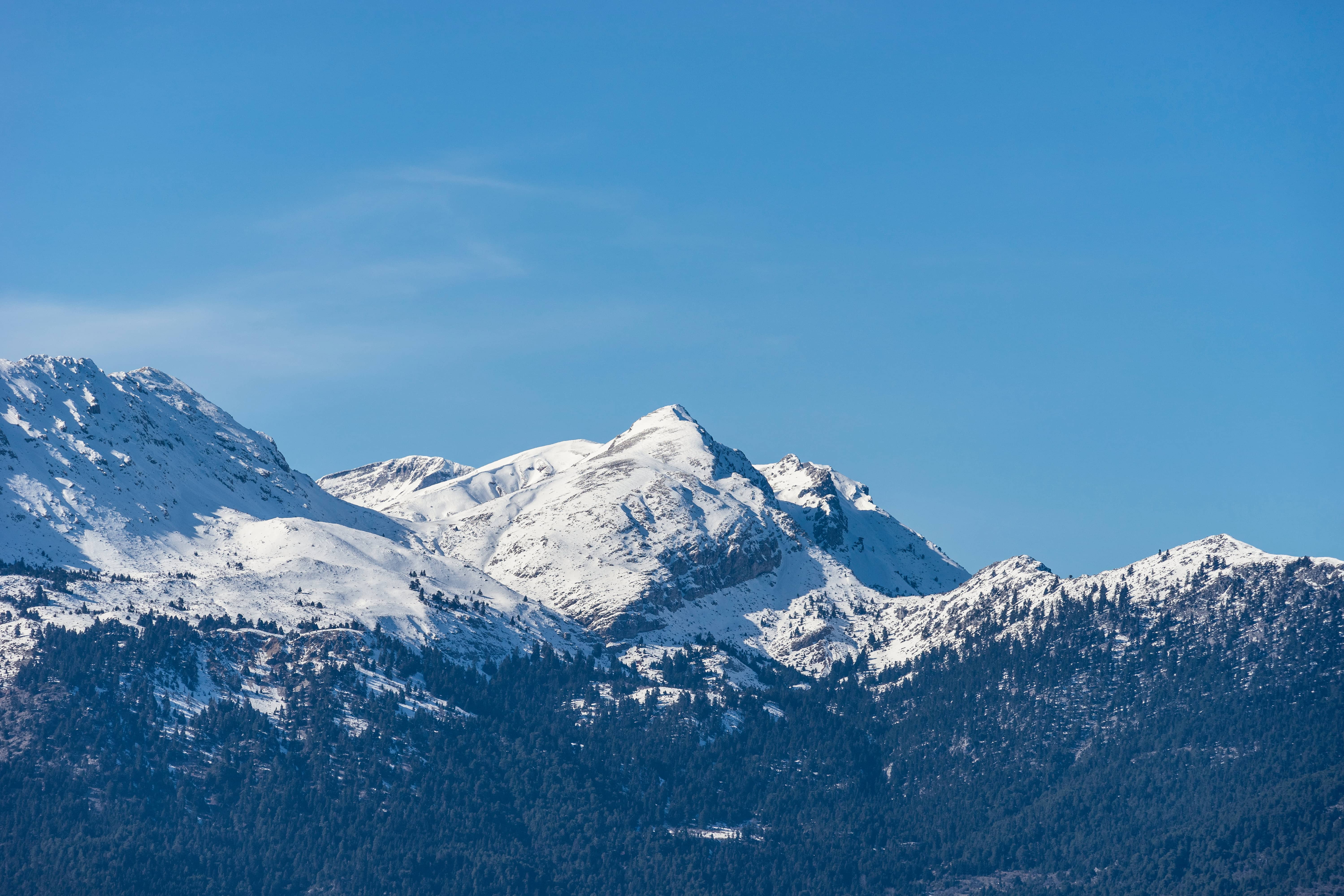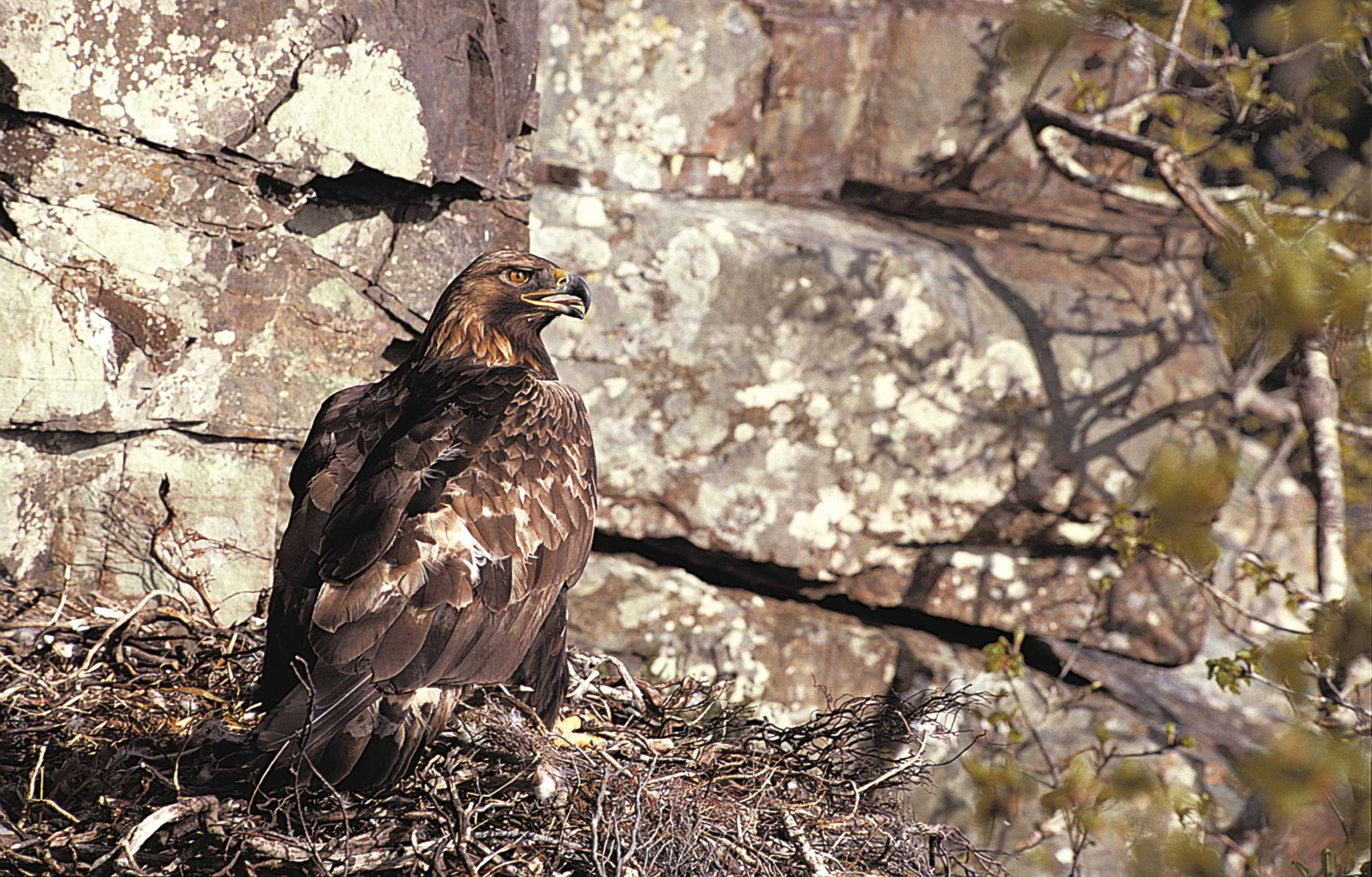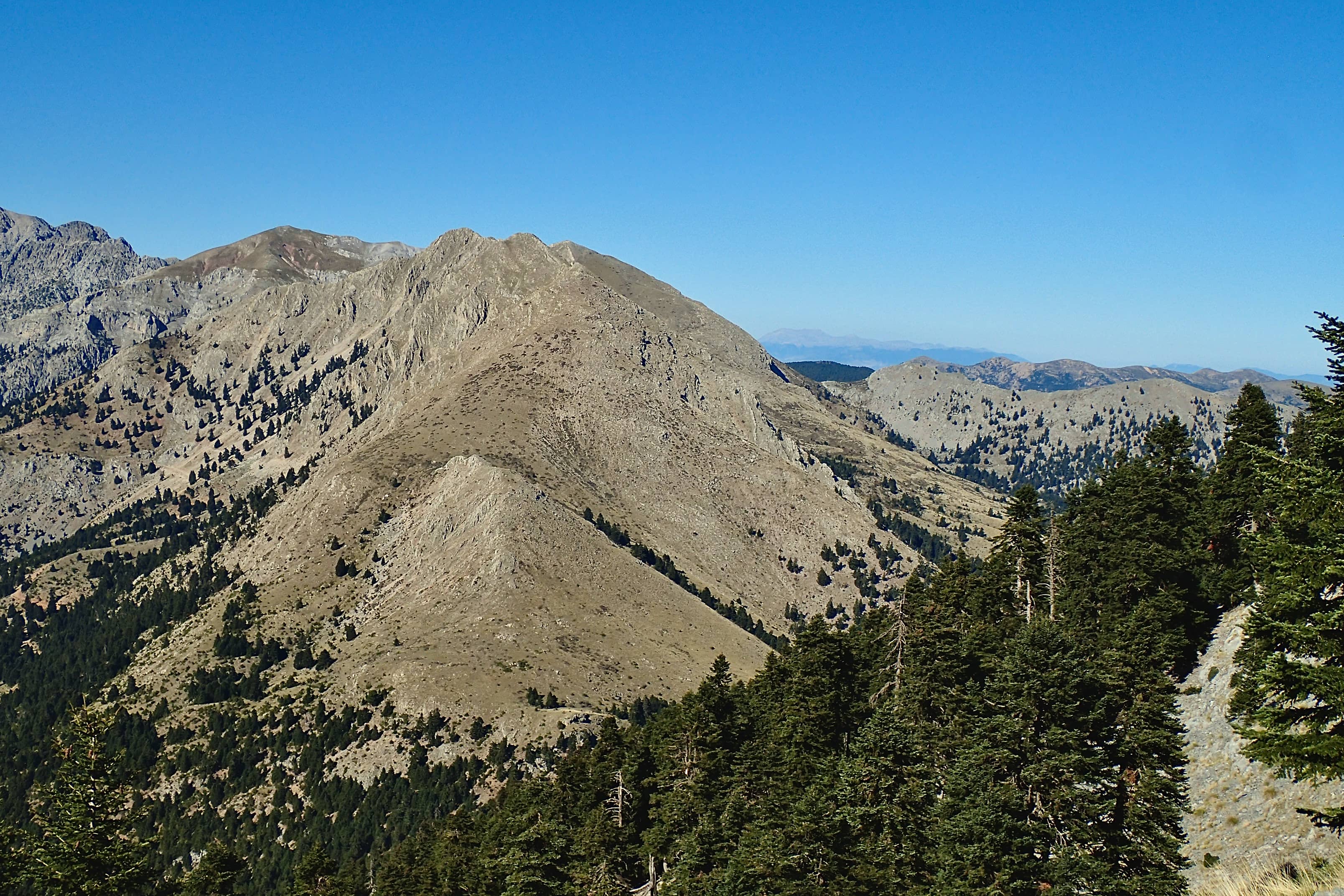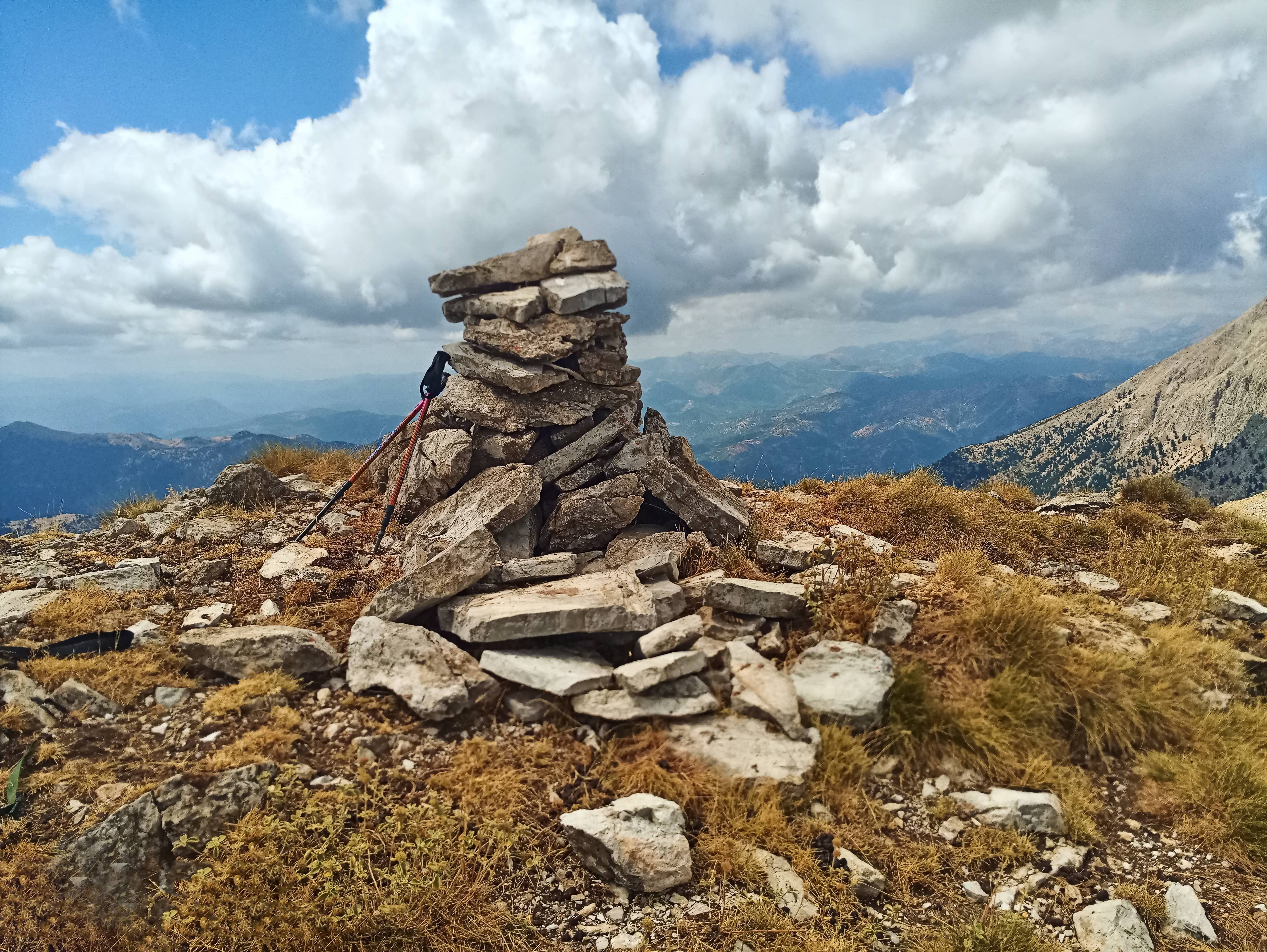TWO SEAS AND AN ISLAND
Madero is one of the peaks of Chelmos Mt, with an altitude a little more than 2.100m (2.140m). It constitutes an imposing limestone mountain surrounded by other peaks of similar altitude (Gardiki- 2.182m and Nisi-2.042m). The name Madero possibly derives from the greek word “μαδάρα (madara)”, which means a deforested, bare, treeless area, unsuitable for agricultural exploitation.
Geodiversity
Madero peak is built of rocks of the Pindos geotectonic Init that have been moved on top of rocks of the Tripolis geotectonic Unit.
The geologic history of this geosite starts several millions of years ago (97.5-36.6 million years) when at the bottom of two separated and distant marine basins, the rocks of Pindos and Tripolis geotectonic Units have been formed. In a shallow sea with reefs, limestones have been deposited (Tripolis Unit). This area was lying west of another marine basin, Pindos Basin. The second basin was deep and at its bottom characteristic deep sea sediments were deposited (radiolarites and limestones of Pindos geotectonic Unit).
The intense compression that prevailed in the wider area resulted in the relative movement between the different blocks that were created along large fractures of the earth’s crust. As a result, the sediments of Pindos geotectonic Unit moved for about 80km on top of the sediments of the Tripolis zone along a fault line which is called a thrust. Once more, due to the compression that prevailed in the area, the rocks were uplifted and became part of the mountain. Today these marine sediments are lying at altitudes more than 2000m.
Biodiversity
The Geosite is located within the Protected Area “OROS CHELMOS KAI YDATA STYGOS” (GR2320002) of the Natura 2000 network. Significant invertebrates with restricted distribution are recorded in the area, with some of them being included in the Red Lists, such as Lepidoptera andOrthoptera.
The area is located within the Special Protection Area (SPA) for avifauna “OROS CHELMOS (AROANIA)-FARANGI VOURAIKOU KAI PERIOCHI KALAVRYTON” (GR2320013). The avifauna of the area is of great interest and includes birds, such as the Golden Eagle (Aquila chrysaetos), and the Eurasian eagle-owl (Bubo bubo).





